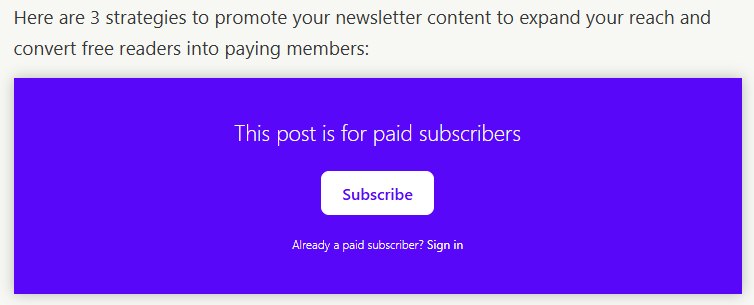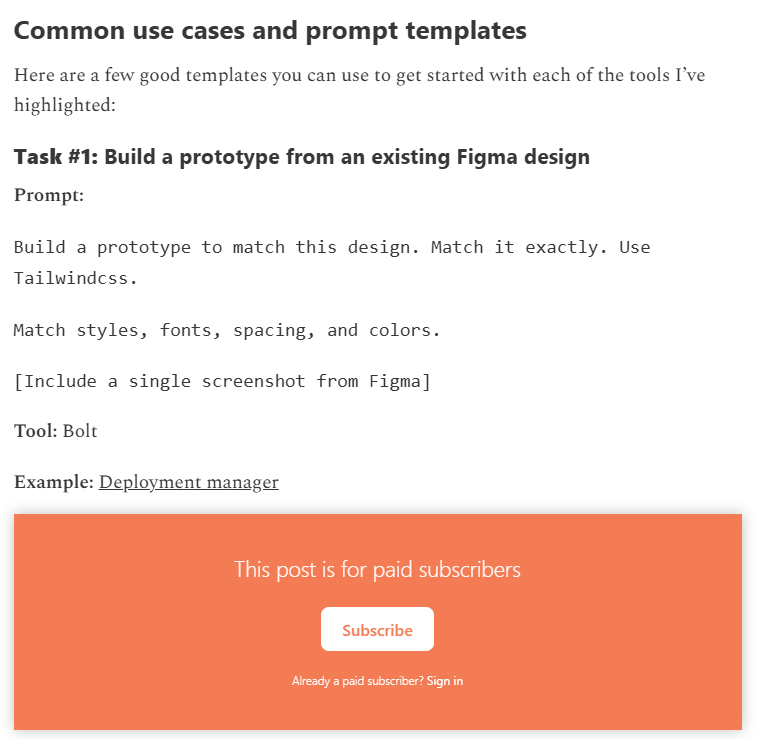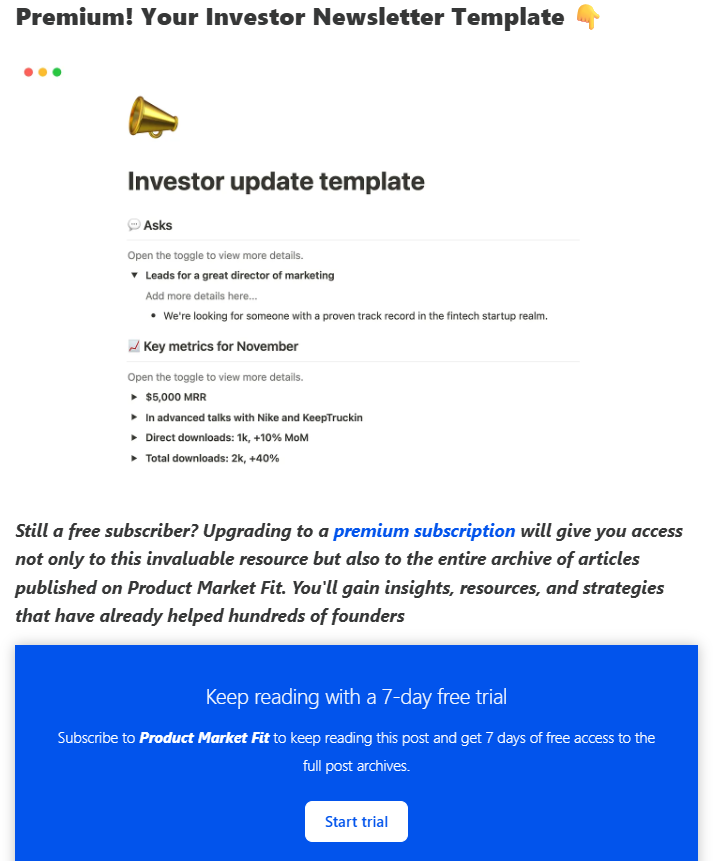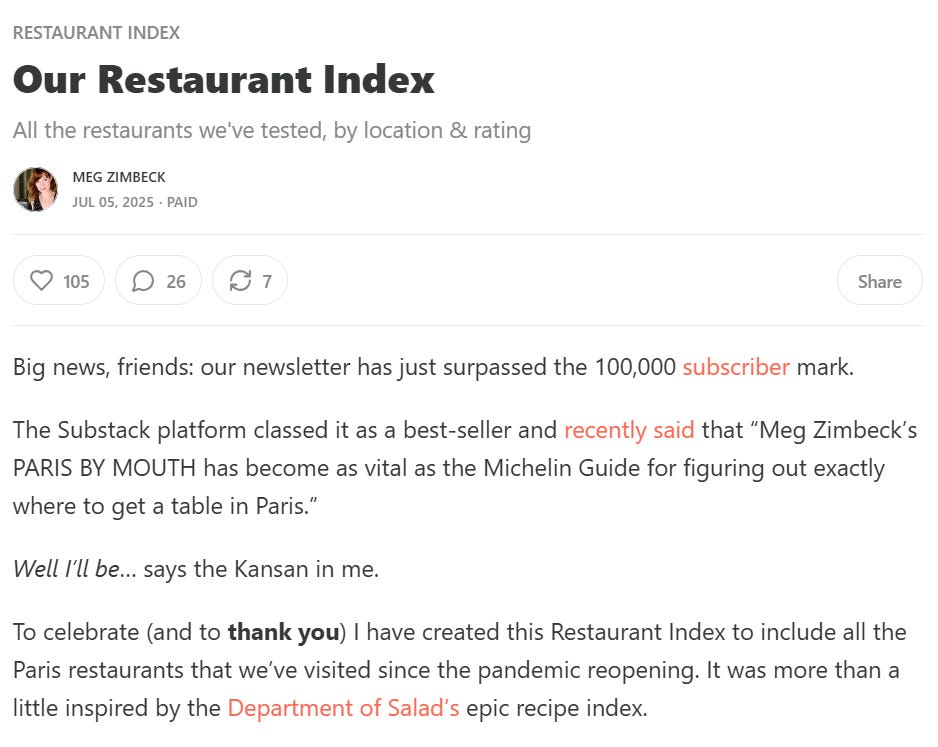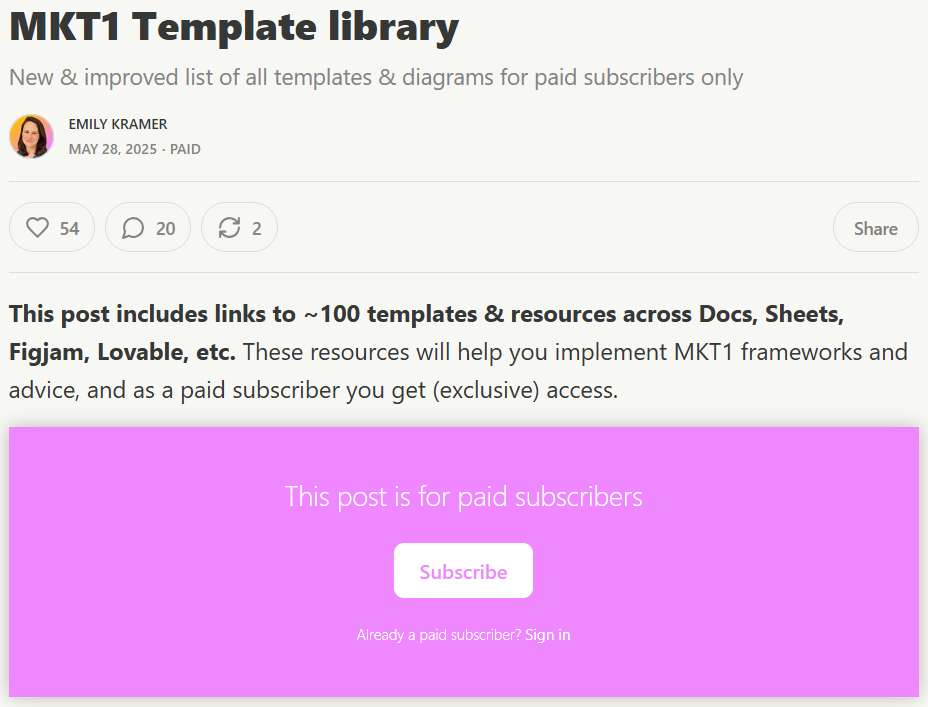8 Proven Paywalling Strategies used by Top Substack Newsletters
Turn Your Paywall Into Paid Subscriber Magnet
Newsletter Circle is your go-to source for building a successful newsletter business through a paid subscription.
When it comes to growing paid subscribers, here’s the million-dollar question:
How much should I give away for free?
And where exactly should I place the paywall?
And here’s the tough part: There’s no one-size-fits-all answer.
Your paywall strategy depends on
Your niche
Your content format
Your subscriber base
Your consistency
And yes even how long or deep your posts usually are.
But one thing is always true: A poorly placed paywall feels like a blocker. A smart one becomes a magnet.
When you get it right, you’re not just locking content, you’re creating a natural path that turns casual readers into paying superfans.
And that’s what this guide is about.
Not locking more posts, but locking them better: placing the paywall where it actually converts, and ensuring there’s real value waiting behind it.
To figure out what works, I studied dozens of Substack Bestsellers —paid newsletters with 100+ paid subscribers— and uncovered 8 common paywall strategies they use to boost conversions.
Let’s break them down, so you can turn your paywall into a paid subscriber magnet.
Before we start: What is a Paywall
A paywall is a digital gate to your paid content. You’re letting someone walk partway in, then asking them to decide: Want to pay to keep going?
It’s not punishment. It’s permission.
It gives readers a moment to reflect: Is this useful to me? Do I want more like this?
And if you’ve done your job well? The answer is yes.
Why Smart Paywalling Matters
Most creators either lock everything or nothing.
They put up a hard paywall on Day 1 and wonder why no one converts. Or they give away everything for free and hope people “just support” them out of generosity.
Neither works long-term.
Paywalls feel aggressive when they interrupt curiosity but they feel natural when they follow value.
That means placement and what you hide behind the paywall matter more than the volume of your paid content.
Before someone is ready to pay, they need to understand two things:
What exactly they’ll get on the other side
Why it’s worth it for them
If you time your paywall right before you’ve delivered something useful, an unexpected insight, a moment of clarity, or a tangible solution, you’re not blocking the reader. You’re meeting them at the peak of interest.
When used well, a paywall can do more than gate content:
Build momentum: Give just enough value upfront so the reader wants more. Not after one post, but after a consistent experience.
Convert at the right moment: People are more likely to pay when they’re already nodding along, not when they’re still figuring out who you are.
Create clarity: A paywall isn’t just about locking content; it helps clarify what’s premium, what’s not, and why.
You need paywalls that make someone think, “If this is free, I wonder what’s behind the paywall.”
8 Powerful Paywalling Strategies
Here are the 8 smart ways to turn paywalls into a paid subscriber magnet:
Share a long free preview with killer value
Gate actionable content such as templates, checklists and tools behind a paywall
Tell a cliff‑hanger story; hide the key value behind the wall
Give a sneak peek to your free readers with a table of contents
Offer community-driven perks behind a paywall that subscribers want to be part of
Time‑sensitive paywall placement with expiry
Quality over quantity: One high‑value paid post per month or a few in-depth articles per year
Provide more aggressive free preview: 2 options on Substack
Let’s explore each of them in detail, including how you can apply them and whether it’s a good fit for your newsletter.
1- Share a long free preview with killer value
What is it?
This strategy involves publishing a substantial preview of your paid content, typically 800 - 1,000 words or an entire insight section, before gating the rest. It's not just a teaser, but a meaningful snippet that demonstrates your premium value.
Why it works
This approach builds trust with your readers by showing rather than telling what they’ll get if they upgrade. Instead of asking them to pay blindly, you're giving them a taste of the full experience. It also:
Reduces friction in the conversion process
Encourages confidence-driven subscriptions
What kind of newsletters could use it?
To apply this approach effectively, you need to write long-form, in-depth articles.
How to apply
Write a long-form with more than 2,000 words
Keep the first 800 - 1,000 words free
Use a clear CTA: “Unlock the rest now” or “Subscribe for full access.”
Host the rest behind the paywall.
🔎 How Substack Bestsellers Put This Into Practice
from often provides detailed, high-quality insights in the free sections of his articles. He typically introduces the paywall after readers have already received immense value.This builds anticipation and positions the paywalled section as the natural next step to continue learning. His method works so well because:
The free part is already impressive and actionable
The gated part promises even more practical takeaways
Readers feel they’re making an informed decision when subscribing
Lenny’s approach proves that giving a lot away can lead to more—not fewer—conversions, as long as your paywall is placed thoughtfully.
2- Gate templates, checklists, tools behind a paywall
What is it?
This strategy involves putting high-value, actionable assets such as templates, swipe files, checklists, spreadsheets, or tools exclusively behind your paywall.
Before gating them, many creators explain or preview what the asset includes and how it benefits the reader, effectively using the content as an upsell mechanism for the paid tier.
Why it works
People are more likely to subscribe when they receive actionable insights or ready-to-use resources they can apply immediately in return for what they’re paying for.
Instant value: Something they can use right away
Specific ROI: Time saved, workflows improved, better decisions made
This strategy turns your paywall into a conversion funnel, leading readers from problem → promise → premium solution.
What kind of newsletters could use it?
Instructional, productivity, or B2B newsletters: those offering actionable materials and solutions rather than just narrative content
Creators offering frameworks, analysis, templates, or interview prep guides, or creative writing series
How to apply
Preview the asset: Describe what the tool/template does and how it helps (e.g., “This checklist saves you 5+ hours per week”).
Mention early and clearly: Tease the deliverable in the intro, summary, or as a callout box within the article.
Gate with purpose: Lock access to the download or full instructions behind a subscription-only link or section.
Optionally, you can also write a comprehensive article, not just a summary of your product, that explains in detail what you offer behind the paywall. You can keep this in-depth and informative piece free to give potential subscribers a clear sense of the value they’d get.
🔎 How Substack Bestsellers Put This Into Practice
, the creator of , delivers long-form, story-rich content to all readers but reserves his most actionable resources (like templates and systems) for paid subscribers.His articles draw people in with deep storytelling, and the gated tools offer high-leverage takeaways. By pairing emotional engagement with practical payoff, Michael makes upgrading feel like a no-brainer.
, creator of , places a paywall on nearly all of his articles and he’s very strategic about it. He hides the key value behind the paywall, often offering high-demand resources like fundraising packs or finance-related templates. and her team, including and , review restaurants in France anonymously and share their critics in their newsletter .To celebrate crossing 100,000 subscribers, they released a premium, members-only guide:
→ A curated list of 300+ restaurant recommendations, compiled from their reviews.
It’s highly specific, deeply useful, and perfectly aligned with what their readers care about.
Result? A paid offer that feels like a can’t-miss gift, rather than a sales pitch.
Here’s another great example from the food & drinks space.
shares weekly menus every Friday in her newsletter , along with grocery lists and detailed recipes for her paid members.While all subscribers can access the weekly menus, the essential extras like step-by-step recipes and shopping lists are placed behind a paywall, encouraging readers to upgrade for the full experience.
is the creator of , one of Substack’s top bestsellers. She shares actionable marketing frameworks, templates, and practical resources that readers can immediately apply to their businesses or jobs.3- Tell a cliff‑hanger story; hide the key value behind the wall
What is it?
This strategy hooks readers with a compelling narrative or case study that builds tension, then stops just before revealing the payoff, prompting them to subscribe to unlock the full insight.
Think of it as a storytelling-driven lead magnet wrapped in suspense.
Why it works
Humans are naturally wired to seek closure. When a story builds intrigue, the need to resolve it becomes a powerful motivator.
This tactic:
Taps into psychological tension (Zeigarnik effect)
Turns curiosity into conversions
Works especially well when the payoff feels specific and attainable
What kind of newsletters could use it?
Perfect for storytelling, case studies, investigative analysis, or deep dives where narrative flow is strong
Ideal for creators who know how to tease just enough without overwhelming or under-delivering
How to apply
Here’s how you can apply this paywalling strategy to your newsletter:


